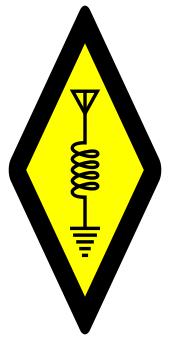PACTOR
PACTOR is a radio modulation mode used by amateur radio operators, marine radio stations, military or government users such as the Department of Homeland Security, and radio stations in isolated areas to send and receive digital information via radio.
PACTOR is an evolution of both AMTOR and packet radio; its name is a portmanteau of these two technologies' names. PACTOR uses a combination of simple FSK modulation, and the ARQ protocol for robust error detection and data throughput. Generational improvements to PACTOR include PACTOR II, PACTOR III, and PACTOR IV which are capable of higher speed transmission. PACTOR is most commonly used on frequencies between 1 MHz and 30 MHz.
History
PACTOR (Latin: The mediator) was developed by Special Communications Systems GmbH (SCS) and released to the public in 1991.
PACTOR was developed in order to improve the reception of digital data when the received signal was weak or noisy. It combines the bandwidth efficiency of packet radio with the error-correction (CRC) and automatic repeat request (ARQ) of AMTOR. Amateur radio operators were instrumental in developing and implementing these digital modes.
Current uses
PACTOR radio equipment consists of an HF transceiver, a computer and a terminal node controller. Software running on the computer drives the terminal node controller. The most commonly used amateur program for this purpose is Airmail.
PACTOR is used by Amateur Bulletin board system operators to exchange public messages, and open conversations across the world. It is also used by the NTSD (digital) portion of the ARRL's National Traffic System (NTS) to pass digital ARRL Radiograms. Newer PACTOR modes are used to transfer large binary data files and Internet e-mail, particularly via the Winlink global e-mail system.
The SailMail network transfers e-mail on behalf of marine stations.[1]
Technical characteristics
PACTOR is a set of standardized modes used by Amateur and Marine radio operators for FSK radioteletype transfer of digital information over shortwave bands.
HF data transmission by radio amateurs uses medium power (~100 Watts) over long distances (100 to 4000 km). Effective radio-frequency communications over such long distances over hostile radio paths require that special attention be paid to the rate at which data is repeated and error correction.
To reduce the amount of data sent, on-line data compression is utilized, along with memory ARQ error correction. By combining these open technologies, PACTOR achieves a power efficiency much greater than that of older protocols such as packet, AMTOR, or RTTY. PACTOR has a very narrow waveform and occupies the same band space as analog 300 baud packet.
PACTOR utilizes very rapid time-division duplexing, giving PACTOR communications its characteristic cricket-like chirping sound when listened through a single-sideband (SSB) receiver.
Depending on the version of PACTOR protocol used and the radio-frequency conditions, PACTOR transmission speeds range from 20 to 5200 bits per second (bit/s; net rate) or 9000 bit/s gross rate utilizing speed 10 (32-QAM).[2][3]
The International Telecommunication Union (ITU) emission designators:
Availability and monitoring
A robust network of PACTOR stations has been established to transfer data between radio stations and the Internet, extending Internet access to sea-based and other isolated users, led by volunteers involved with Winlink, under the auspicies of ARSFI (a Florida-based non-profit organization).[6]
Pactor modes other than level 1 (P1) are not open source,[7][8] but are publicly documented[9] and can be monitored and decoded easily over the air by third parties using free Raspberry Pi software ("PMON for Raspberry Pi")[10] or PMON utility on the modem itself[11].
See also
References
- "Sail-mail e-mail service for yachts via Iridium, Inmarsat, or SSB". Sail Mail. Retrieved 1 September 2010.
- "More on comparisons of digital HF modes". News. PACTOR. Retrieved 1 September 2010.
- "Technical details on the Pactor-IV protocol". p4dragon.com. PACTOR IV. Retrieved 1 December 2011.
- "Characteristics of systems operating in the amateur and amateur-satellite services for use in sharing studies" (PDF). International Telecommunication Union. 2012. ITU-R M.1732-1.
- "Characteristics of HF radio equipment for the exchange of digital data and electronic mail in the maritime mobile service" (PDF). International Telecommunication Union. 2010. ITU-R M.1798-1.
- "A brief guide to the elements of Winlink 2000". Winlink 2000. Retrieved 1 September 2010.
- "Original request to FCC for Pactor I in Amateur Radio by ARRL". 1995.
- "Pactor I open source published in QEX, TAPR, 1994".
- "Downloads". www.scs-ptc.com. Retrieved 20 November 2019.
- "PMON". www.p4dragon.com. Retrieved 20 November 2019.
- "Update Info DR7X00 vers. 1.17" (PDF). p4dragon.com.
- Steve Ford, WB8IMY (2001). "Chapter 5 - PACTOR". ARRL's HF digital handbook. Newington, CT: The American Radio Relay League. ISBN 0-87259-823-3.
External links
- "pactor". scs-ptc.com. Archived from the original on 16 August 2009.
- "PACTOR-4". p4dragon.com.
- "winlink.org".
- "airmail2000.com".
